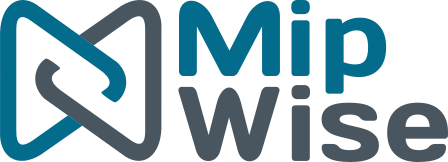Driving Decision Intelligence Into Operations
The technologies we need to facilitate enterprise decision-making are here. But to leverage these technologies to their full potential, we will need to bring together scientists and decision-makers, academia and industry, communities of potential decision scientists, and cognitive and artificial intelligence.
Computers are becoming more and more efficient at deriving decisions from data compared to humans. So much that software is shaping our behavior and taking over so many tasks that humans used to execute poorly. This is not to say that machines will take over the world (we leave that for sci-fi movies). We truly believe that humans will continue to play a critical role in making decisions, a different role, though! Let’s illustrate this with a simple story.
Joe is the production planner of a tire factory. He used to constantly review inventory levels and used his experience to decide what type of tires to produce next in each machine. Although very skillful, when Joe would look at the history of decisions and the respective outcome, he would always notice inefficiencies.
One day, Joe met Joana, who was curious to learn about Joe’s problem. Joana had recently completed a Data Science course and was keen to use analytics to help Joe to build more efficient production plans. From the first systematic analysis that Joana performed on Joe’s historical production data, she realized that inefficiencies were a lot bigger than Joe thought. Some more investigation led them to conclude that the inefficiencies were not Joe’s fault. The problem was that he didn’t have enough visibility of the future demand, the reason why he was always being reactive and making decisions that would lead to an underutilization of the assets.
They then decided to take a step forward and Joana felt motivated to learn some basics of Machine Learning. Shortly after, she was able to forecast demand for tires a couple of weeks in advance, and with a fair level of accuracy. Joe felt super excited because Joana had helped him to gather all the required information to plan production for a whole month in advance. This would eliminate not only inefficiencies but also the stress that Joe had been experiencing due to the pressure to make last-minute decisions.
Unfortunately, the excitement didn’t last very long. Soon they realized that planning production ahead, over a one-month horizon, was incredibly hard. There were too many scenarios to consider, and identifying the best one seemed absolutely impossible, even for an experienced person like Joe.
Analyzing thousands of possible SKU-asset combinations may indeed be unbearable for a human being, but not for a computer. Once again, Joana decided to move on her learning journey. This time, to study Operations Research.
After a few months, Joana had learned some optimization basics and modeled Joe’s production planning as a mixed-integer program. A period of testing and enhancements to the model followed. Eventually, Joana’s program started to produce schedules that Joe was really surprised to see. Rather than wading through countless combinations, Joe’s task now was to make small adjustments to the schedules to account for some subjective aspects not captured in the model.
Joana was feeling great about the contribution she had made. Now she is looking forward to deploying a web application that would give Joe more autonomy to interact with her engine, like refreshing data, changing configurations, and analyzing scenarios.
Joe was feeling excited to realize all the benefits of a well-planned production schedule. Now, he is thinking about expanding the solution to address inventory and distribution requirements altogether.
This story illustrates how the democratization of science and technology can empower people to make better decisions. It also suggests that the best results are achieved when decision-makers and scientists can collaborate closely.
In addition, the story shows the importance (or even the need) of breaking through silos, in this case, going from descriptive to predictive to prescriptive analytics, and even software development, to deliver the best results.
Ultimately, this is a story about shifting and expanding roles. Joe now uses technology to support him in the process of making analytically driven, scientific-based decisions, rather than just reacting to events in a hectic way. Joana breaks through silos to become a decision scientist, capable of effectively communicating and understanding business problems, handling data, using descriptive, predictive, and prescriptive analytics, and developing software to deliver a solution that truly supports the end-user to make better decisions.
Although the story of Joe and Joana is fictitious, it’s not far from reality at all. See the white paper about C.H. Robinson’s use case for a real-world example, especially the sessions Business Process, User Skepticism, and User Productivity Improvement.
